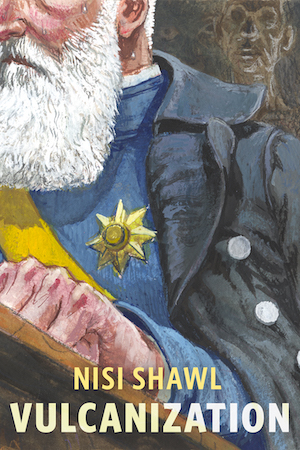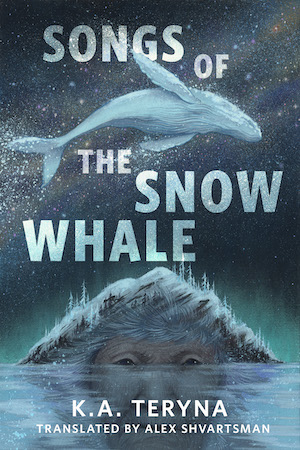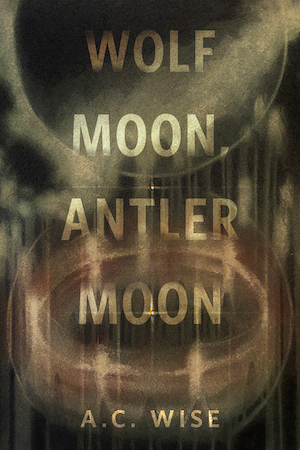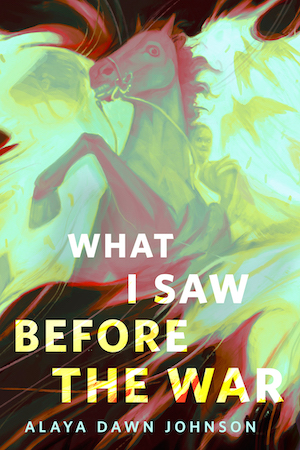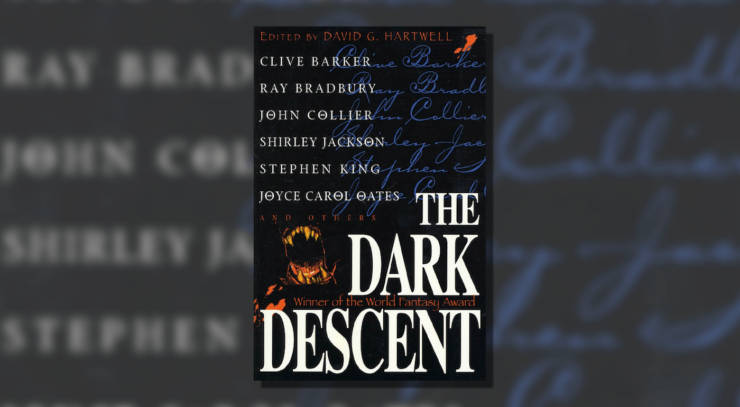Welcome back to Dissecting The Dark Descent, where we lovingly delve into the guts of David Hartwell’s seminal 1987 anthology story by story, and in the process, explore the underpinnings of a genre we all love. For an in-depth introduction, here’s the intro post.
When it comes to speculative short stories, Gene Wolfe was one of the great stylists. He experiments with form and uses the strange to skewer the unconscious biases of society. Whether we’re focusing on his dense webs of symbolism, his use of satire and metafiction, or simply his gift for the bizarre, it’s rare to find someone who (even if they’re not a huge fan of Wolfe) can keep themselves from marveling at the man’s dedication to craft. “Seven American Nights” puts all of this on display, flipping the idea of the “ugly American” in fiction and the “exotic travel narrative” on its head, and then plunging it into unreliable psychedelic horror. The result is a gleefully deconstructive and disturbing look at xenophobia, the fall of empires, and the entrenched tendency of supposedly “civilized” people to exoticize and essentialize other cultures.
“Seven American Nights” is the diary of Nadan Jaffarzadeh, a Persian artist taking his first trip to the savage third-world nation of America. The America of the future is a horrid, polluted wasteland where technology has regressed to medieval levels and the citizenry has mutated into grotesque creatures. While Nadan claims to be resistant to this horrid country’s supposed charms, he quickly succumbs to an obsession over an “American beauty” by the name of Ardis Dahl, gets ensnared in philosophical conversations, and begins playing a dangerous game with six marzipan eggs and weapons-grade LSD purchased at the Smithsonian. This game sends Nadan’s vacation from hell spiraling into a full-on sojourn into the infernal, as the barriers between reality and dreams, abstraction and concrete ideas, and his own sanity melt away. Nadan might survive his seven American nights, but what will be left of him?
“Seven American Nights” is a riff on travel narratives where a (usually white, usually anglophone, usually Christian) young man or woman would go to some exotic place and experience odd sights, surreal danger, and mysticism. Similar riffs on the narrative even extend into the 1950s with such works as Naked Lunch, which presents itself as an American’s adventures abroad in a horrifyingly surreal version of Morocco. Wolfe, of course, turns this xenophobic concept on its head by having a Persian man (Orientalism being a common thread in these stories) journey to a dystopian, post-apocalyptic America in decline. All the usual tropes are highlighted and made fun of alongside the exaggerated dystopian criticisms usually made of America, with exoticized descriptions of the mutated people, comparisons of this “savage land” with the more civilized Iran (a poke at the US and UK involvement in the coup and subsequent revolutions that placed Ayatollah Khomeini in charge of Iran), and the ruins of the White House treated like the last vestiges of an ancient civilization. The play Nadan sees is similarly a jab on this—Gore Vidal’s Visit to a Small Planet is a satire on 1950s America and the military-industrial complex. In another parallel to exotic travel narratives, the narrator buys a local psychedelic drug, implied to be a weapons-grade hallucinogen.
This device is what throws “Seven American Nights” into the territory of the truly strange and upends the simple conceit of a deconstructed “exotic travel” narrative. Nadan decides to play a game like Russian roulette with a box of marzipan eggs, dumping the entirety of a bottle’s worth of hallucinogen on one of the eggs and putting them in an empty drawer in his hotel room. From that point on, the narrative continues its strange exploration of a future America where a “genetic crisis,” societal collapse, and pollution have turned it into something that barely qualifies as a third-world nation but with the added twist that what we see might be the protagonist’s own drug-fueled nightmare. This underscores the existing strangeness and heightens the horror—Wolfe’s America is a world that already borders on nightmare, and with each subsequent possibly spiked candy, that nightmare only grows more unnerving. It also allows Wolfe to dip into “tourist horror,” with both the rampant exoticization and horrifying danger to foreigners showing where the blame should be placed in travel narratives: on the tourists themselves. Rather than enlightenment, Nadan finds only his own paranoia and a disturbing propensity for violence as he loses his grip on reality.
Nadan is the author of his own misfortune—from getting lost in nested abstractions that see him flipping between drug trip, miserable tourist experience, and elements of the plays he sees at the theatre, to his insistence on continuing his idiotic drug-trip “game” even after he shoots something he can’t be sure is real while stalking the actress he’s obsessed with. His ill-fated trip to the secret police even begins because he started a fight with someone and then pressed charges at the urging of police. Much like Americans and other wealthy, entitled tourists tend to do in other countries, he treats himself as the main character of some exciting narrative even (and especially) when it gets others hurt or killed. While there’s certainly pathos in Nadan—no one deserves to go through the horrors he experiences; he has reasons for going to America he edits out of the document, and he seems to just get swept up in excitement—it’s similar to “Evening Primrose,” in that he believes he’s some kind of amazing artist when really he’s just a pathetic figure imposing himself on people with less privilege.
While there’s room for pity, it couldn’t happen to a more deserving person. Nadan is every bit the narcissistic, exoticizing tourist one finds in most travel narratives. Even before the possibility that he’s drugged turns him into a deranged and paranoid murderer, he’s condescending and rude towards the locals, becomes obsessed with an actress’s “American” beauty, and disparages most of the culture and food he encounters. He has delusions of grandeur that he’ll write a book or sketch the postapocalyptic ruins of Washington, D.C. but “delusions” is all they are. Most of his time is spent wandering around the few spots within walking distance of his hotel until he gets drawn into intrigue with the theatre troupe and the secret police. In traditional travel narratives, he might be redeemed by his enlightened experience with the psychedelic drug and the local exotic beauty. In pure tourist horror, he’d be savaged and possibly murdered (or merely taught a harsh lesson) after failing to pay attention to the local customs, but it would largely be seen as the fault of the esoteric and exotic people he’d stumbled across. Wolfe isn’t interested in either of these outcomes. For “Seven American Nights” to work, it needs to be the tourist’s fault every step of the way.
Wolfe’s novella is a harsh critique of xenophobia and a deconstruction of what was (in 1978) the potential trajectory of America’s descent into a polluted and paranoid police state. Through its nominal hero, psychedelic horror spiraling into multiple layers of abstraction, and a plot that references both the burgeoning “tourist in strange locale gets terrorized by locals” genre and the well-established “tourist has an enlightening experience in a strange land” genre, “Seven American Nights” ruthlessly skewers not just the social and political climate of the 1970s but the lazy writing of numerous, hackneyed “trips to foreign lands” stories that unfortunately endure to this day. We might not be living in Wolfe’s psychedelic horror of an America, but it’s hard not to look at his twisted vision and see it as prescient.
And now to turn it over to you. What did you think of Wolfe’s vision of the future US? Will there ever be an end to the glut of “white people getting enlightened abroad” stories? And what’s your personal favorite work from Gene Wolfe’s long and storied career?
Please join us in two weeks for “The Signalman” from a certified master of the English ghost story, Charles Dickens.


